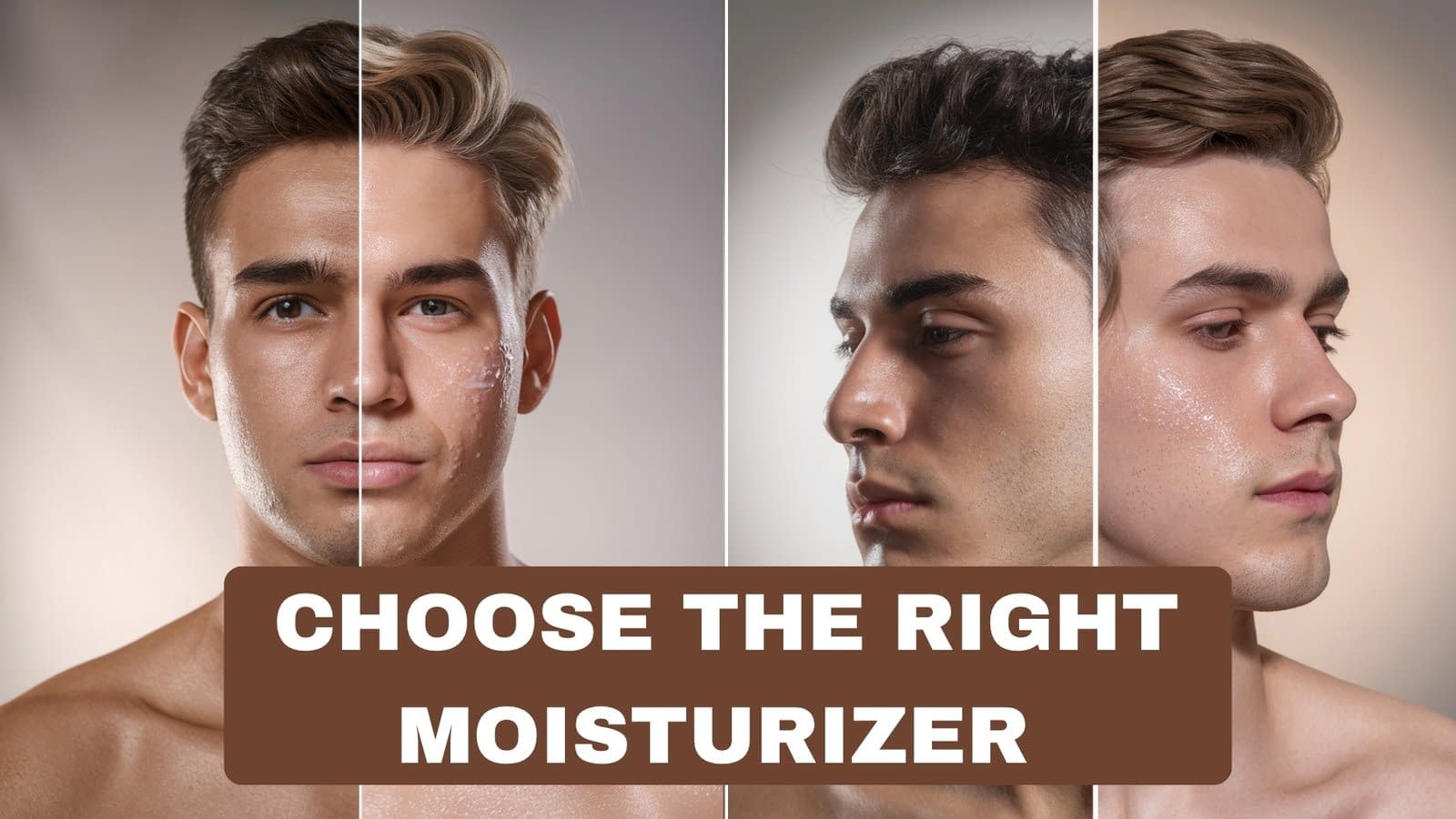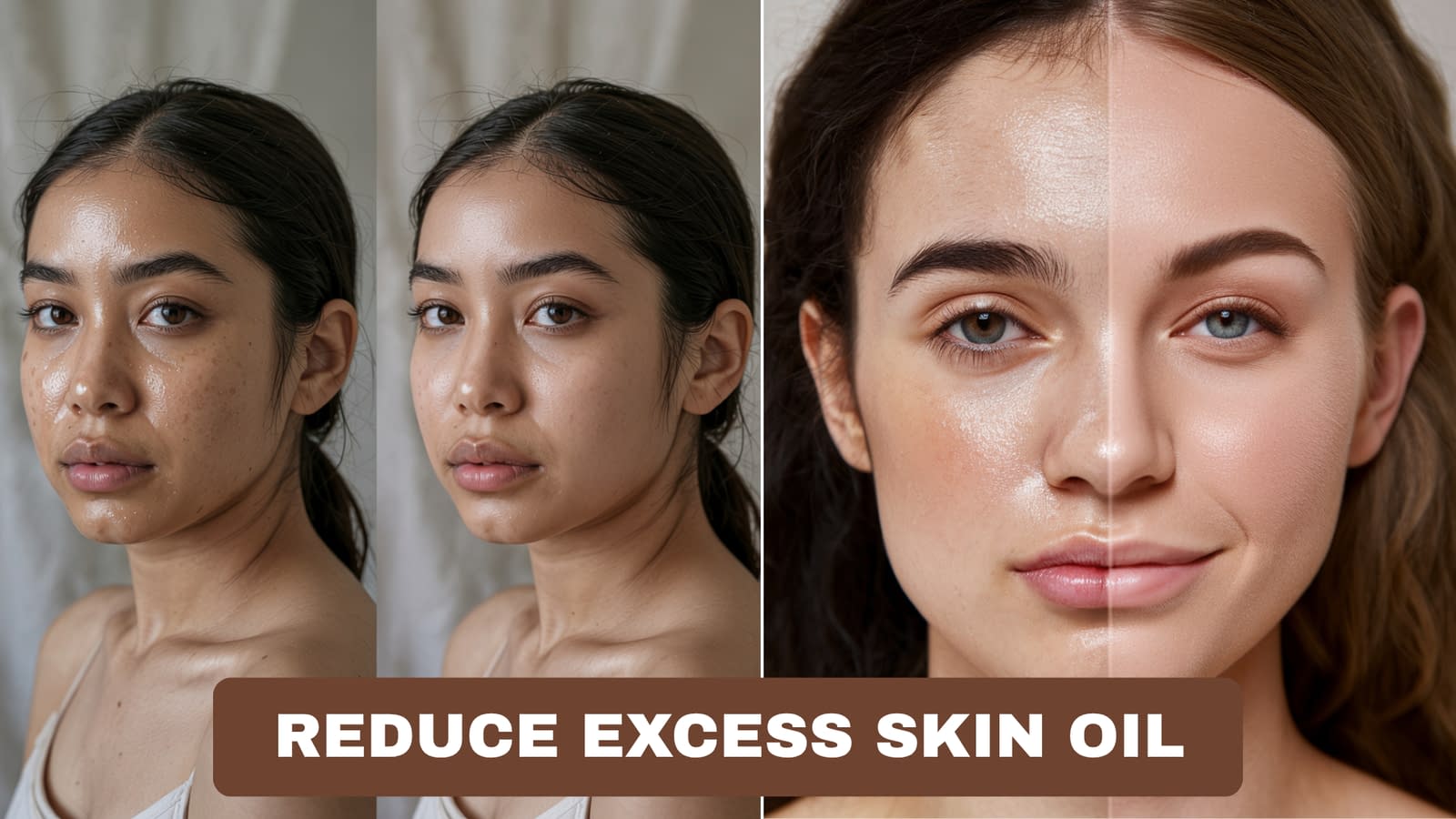Good skin isn’t an accident—it’s habit. A proper moisturizer does more than make your face feel soft: it protects the skin barrier, seals in hydration, calms irritation, reduces the appearance of fine lines, and helps other products (like serums and sunscreen) work better. This guide walks you through how to identify your skin type, which moisturizers and ingredients actually help, what to avoid, and exactly how to use products so they deliver real results. No fluff — just practical, expert-friendly advice men can implement today.
Why Every Man Needs a Good Moisturizer
Moisturizing is not a cosmetic luxury — it’s basic skin maintenance. Here’s what a good moisturizer does and why it matters:
- Restores and protects the barrier. The skin barrier (the outermost layer) keeps moisture in and irritants out. A moisturizer replenishes lipids and prevents transepidermal water loss (TEWL).
- Prevents irritation from shaving. Shaving removes surface oils and can damage the barrier—moisturizers soothe, speed repair, and reduce post-shave tightness and redness.
- Improves texture and appearance. Hydrated skin reflects light better, looks plumper, and shows fewer fine lines. Chronic dryness amplifies lines and roughness.
- Increases tolerance for active ingredients. A healthy barrier lets you use retinoids, acids and vitamin C with less irritation.
- Boosts overall skin health. Many moisturizers deliver beneficial ingredients (antioxidants, ceramides, niacinamide) that support long-term resilience.
Bottom line: whatever else you do (serums, masks, treatments), a daily moisturizer is the foundation. Skipping it is like driving without oil—your engine will run, but not well for long.
Understanding Your Skin Type: The First Step to Choosing Right

Before you pick a moisturizer, know your skin. Here are the main types and how to identify them.
Oily
- Shiny, especially across the forehead, nose and chin (T-zone)
- Prone to large pores and breakouts
- Feels less tight after washing
Dry
- Tight, flaky or rough texture
- Fine lines can look more visible
- Feels uncomfortable after washing
Combination
- Oily T-zone with drier cheeks and temples
- Needs a balance of oil control and hydration
Normal
- Even tone, few breakouts, neither too oily nor flaky
- Responds well to most moisturizers
Sensitive
- Prone to stinging, burning, redness or allergic reactions
- Reacts to many fragranced or alcohol-containing products
Quick test to confirm your type (5-minute)
- Wash your face with a gentle cleanser and pat dry.
- Wait 30–60 minutes without applying anything.
- Examine:
- If your face is shiny across the whole face → oily.
- If cheeks feel tight and flaky → dry.
- If T-zone shiny and cheeks dry → combination.
- If everything feels balanced → normal.
- If you feel stinging or see redness from the cleanser → sensitive.
Knowing your type tells you whether you need lightweight hydration, a heavy cream, or targeted barrier repair.
Best Moisturizers for Each Skin Type
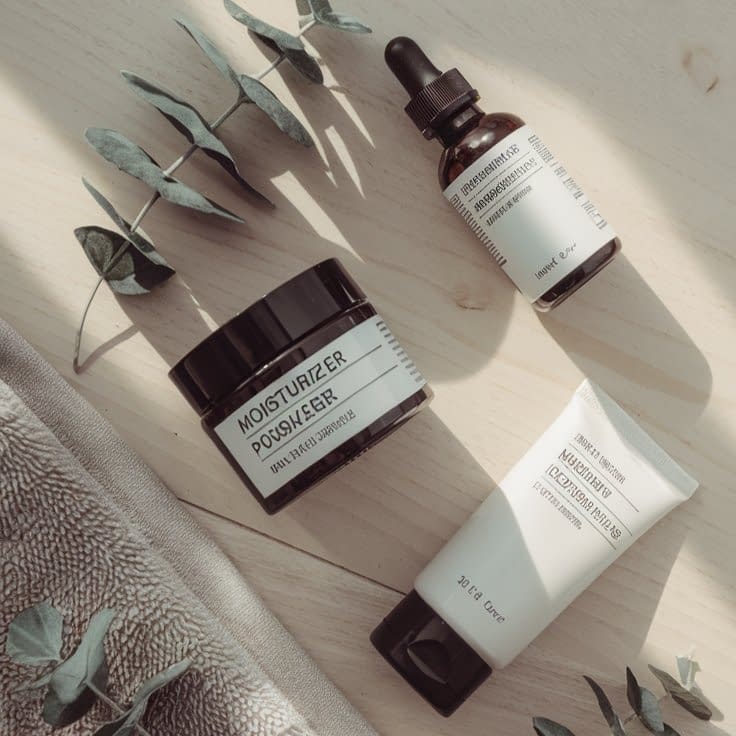
Below are practical recommendations (types of formulas and ingredients to prioritize) for each skin type. Think “what to look for” and “what to avoid.”
Oily Skin — Lightweight, non-comedogenic
- Look for: gel-creams, oil-free lotions, water-based serums.
- Key ingredients: hyaluronic acid (hydration without oil), niacinamide (reduces oil production and minimizes pores), lightweight humectants (glycerin).
- Texture: gel or light lotion that absorbs quickly.
- Avoid: heavy oils (coconut oil), thick butter-rich creams, and comedogenic ingredients (some esters).
- Example use: AM: lightweight hydrator + SPF. PM: same or a light serum + non-greasy moisturizer.
Dry Skin — Rich, reparative creams
- Look for: richer creams or ointment-style moisturizers that contain occlusives.
- Key ingredients: ceramides (barrier repair), fatty acids, cholesterol, glycerin, hyaluronic acid, squalane, shea butter.
- Texture: thick cream, balm, or lotion.
- Avoid: high-alcohol toners or strip-dry cleansers.
- Example use: AM: hydrating serum (hyaluronic) then cream; PM: richer night balm or occlusive layer on top of night cream for very dry skin.
Combination Skin — Balance & targeted layering
- Look for: light, non-greasy lotion in AM; richer product on cheeks if needed.
- Key ingredients: niacinamide (balances), hyaluronic acid (hydrates), lightweight oils like jojoba or squalane.
- Strategy: use thinner products on T-zone, thicker on dry areas (either mix or use two products).
- Example use: AM: gel lotion across T-zone and cream dot on cheeks; PM: lightweight oil on T-zone if needed + a thicker cream on dry patches.
Normal Skin — Maintain & protect
- Look for: balanced lotions or creams with humectants and barrier-supporting lipids.
- Key ingredients: hyaluronic acid, ceramides, antioxidants (vitamin E, green tea).
- Texture: medium-weight lotion.
- Strategy: choose based on climate—lighter in summer, richer in winter.
Sensitive Skin — Minimal, soothing formulas
- Look for: fragrance-free, low-irritant formulations, parsimonious ingredient lists.
- Key ingredients: glycerin, ceramides, aloe vera, oat (colloidal oatmeal), panthenol.
- Avoid: essential oils, strong fragrances, denatured alcohol, and high concentrations of actives without patch testing.
- Example use: patch-test any new product on the inner forearm for 48 hours.
Key Ingredients That Actually Work for Men’s Skin
Ingredients matter more than marketing. Here’s what to favor and why.
Hydrators (pull and hold water)
- Hyaluronic acid: humectant that draws moisture into the skin. Use layered (apply on damp skin).
- Glycerin: reliable humectant, inexpensive and effective.
Barrier repair and occlusives (seal and protect)
- Ceramides: essential lipids for the barrier—repair and long-term moisture retention.
- Squalane: light, skin-like emollient that adds slip and protection without greasiness.
- Petrolatum / dimethicone (occlusive): excellent at preventing TEWL — great at night or for very dry skin (use sparingly for acne-prone skin).
Soothers and anti-inflammatories
- Niacinamide (vitamin B3): reduces redness, improves barrier, minimizes pore appearance and evens tone. Extremely versatile.
- Panthenol (pro-vitamin B5): soothing and humectant.
- Centella asiatica (cica): calming, good for sensitized skin.
Anti-aging & brightening aids
- Retinoids (retinol, retinal): stimulate collagen and speed cell turnover—use at night and ease in slowly.
- Peptides: support collagen and skin firmness.
- Vitamin C (L-ascorbic acid or stable derivatives): antioxidant and brightening (use in AM under SPF).
Exfoliating partners (help moisturizer work)
- Low % AHA/BHA in adjunct products — remove dead cells so moisturizing ingredients penetrate.
Ingredients Men Should Avoid in Moisturizers
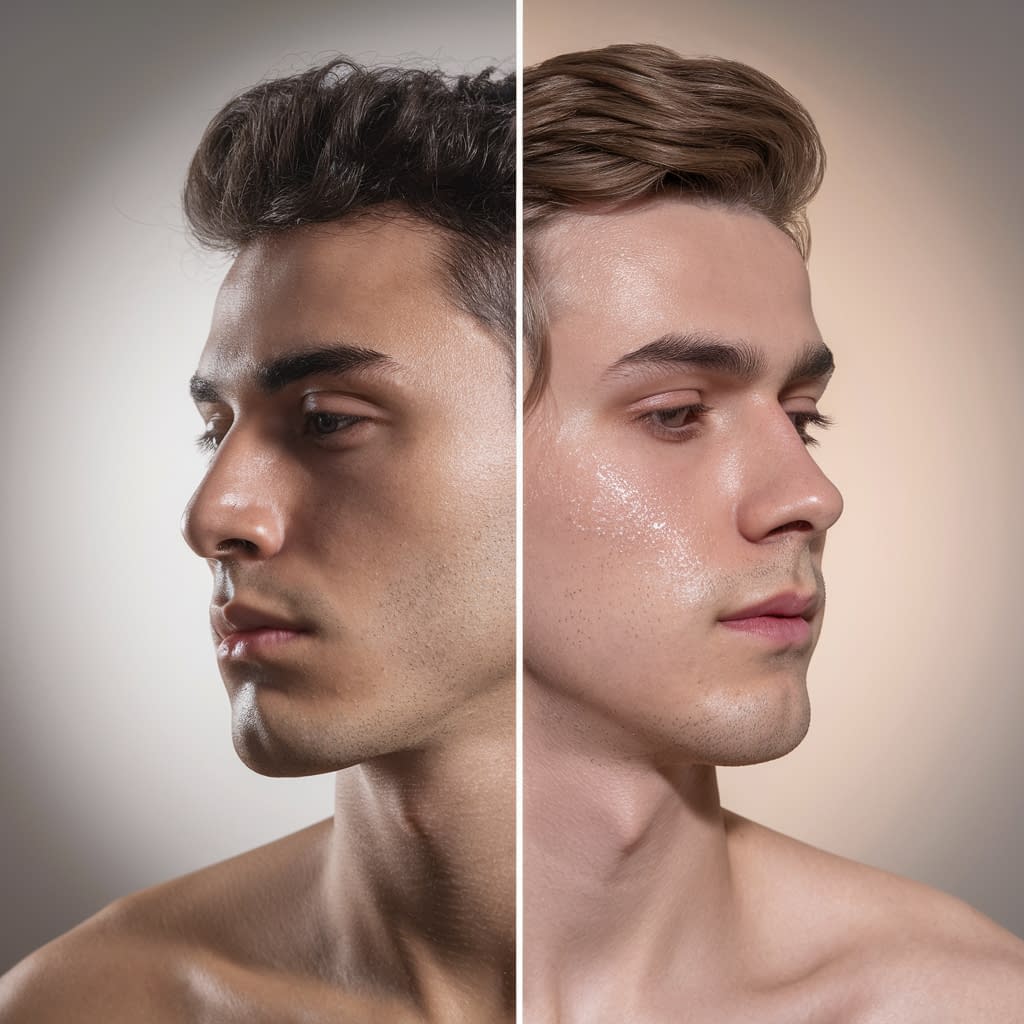
Not all “natural” or “strong” ingredients are helpful. Watch out for:
- Harsh denatured alcohol (if high in the ingredient list) — dries and weakens the barrier.
- Fragrance / parfum / essential oils — major cause of irritation and allergic reactions in men, especially sensitive or acne-prone skin.
- Comedogenic oils for oily/acne-prone skin: coconut oil and certain heavy esters can clog pores.
- High concentrations of actives without guidance — e.g., strong acids or high-dose vitamin A in the same product as exfoliating acids—can over-irritate.
- Sulfates in cleansers (not moisturizers) but worth avoiding in your routine if you have dry/sensitive skin.
Always patch-test if you have concerns, and prefer fragrance-free options if you’re unsure.
Day vs. Night Moisturizers: What’s the Difference?
Moisturizers can be optimized for the time they’re used.
Daytime (AM) — protection + lightweight hydration
- Goals: hydrate, protect from environmental stressors, and pair with sunscreen.
- Texture: lighter, fast-absorbing lotions or gel-creams.
- Key add-ins: antioxidants (vitamin C, niacinamide), and—critically—sunscreen on top (SPF 30+). Some day creams come with built-in SPF, but separating serum + sunscreen is often better for potency and texture.
Nighttime (PM) — repair and replenish
- Goals: support skin repair, restore barrier lipids, and allow actives to work without sun exposure.
- Texture: richer creams, emulsions, or balms.
- Key add-ins: retinoids (use at night only), peptides, ceramides, and occlusives (for very dry skin). A thin occlusive (petrolatum) on top of a treatment can improve retention and reduce retinoid irritation.
Pro tip: If you use retinol, apply a small amount of moisturizer first (skin-first approach) to buffer irritation, then product. Or use the moisturizer-on-top method to decrease sensitivity.
How to Apply Moisturizer the Right Way
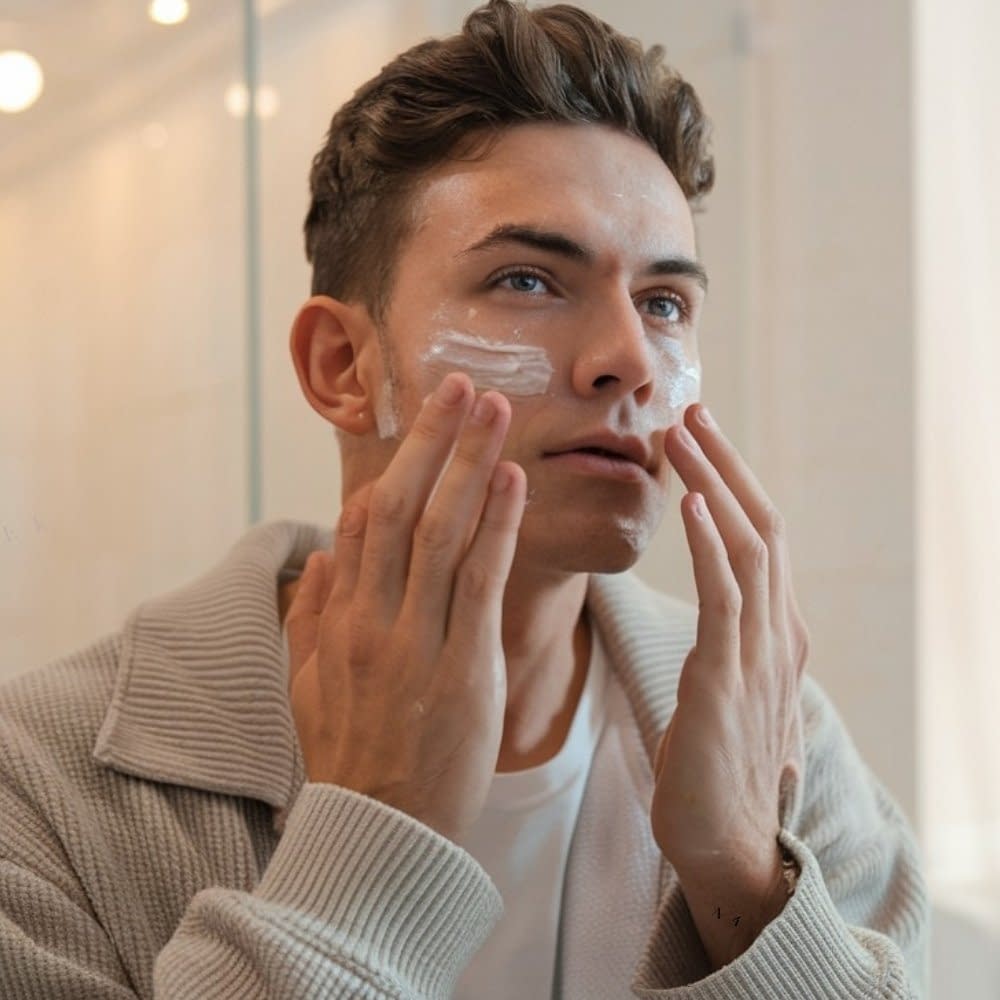
A simple routine with correct technique improves absorption and results.
Step-by-step application (AM & PM)
- Cleanse first. Remove dirt, sweat and film so ingredients can penetrate. Use a gentle cleanser suited to your skin type.
- Treat (optional). Apply thin serums/actives (vitamin C in the AM; retinol or targeted treatments at night). Let them absorb for 30–60 seconds.
- Dampen the skin. Moisturizers work best when applied to slightly damp skin—this helps humectants like hyaluronic acid draw water into skin. Pat towel-damped skin gently.
- Use the right amount. A pea-size to nickel-size (AM for face) is often sufficient; scale up for larger beards or drier skin. Too much product can pill or sit on the surface.
- Apply with technique: press the product into the skin with gentle upward motions—avoid dragging. Pay attention to areas prone to dryness (cheeks, around mouth) or shaving irritation (neck).
- Finish with SPF in the AM. If your moisturizer doesn’t include SPF, apply a broad-spectrum sunscreen SPF 30+ as the final step.
- For beard wearers: apply product to the skin first, then comb through hair so the oil/moisturizer reaches follicles and skin. This prevents product from sitting only on hair and leaving the skin dry.
Special notes
- If you use a beard balm or heavy oil, apply a thinner facial moisturizer to the skin first to keep the barrier repaired and prevent congestion.
- For sensitive skin, do a patch test on the inner forearm for 48 hours before full-face use.
Skincare Routine Tips to Maximize Your Moisturizer’s Benefits
A moisturizer is one piece of the puzzle. Use these habits to multiply benefits:
- Cleanse gently—use a mild, pH-balanced cleanser. Overly stripping washes force your skin to produce more oil or dry out.
- Exfoliate appropriately—1–2× per week via chemical exfoliant (BHA/AHA) or a gentle scrub depending on tolerance. Exfoliation removes barriers to penetration.
- Use targeted serums—apply actives (vitamin C, niacinamide) before moisturizer to enhance performance.
- Sunscreen daily—prevents UV damage that breaks down barrier lipids and collagen.
- Layer strategically—lightest (thinnest) products first (water-based serums), then cream, then occlusive if needed.
- Adjust seasonally—use richer creams in winter; lighter gels in summer.
- Hydrate internally—drink water throughout the day and eat balanced fats (omega-3s) to support barrier function.
Expert Tips to Keep Your Skin Healthy and Confident
Beyond product choice, these practical tips make a real difference.
- Be consistent. Use your moisturizer morning and night for at least 4–8 weeks to judge effectiveness—skin turnover is a slow process.
- Simplify rather than multiply. A few well-chosen, compatible products used correctly are better than 10 random items.
- Trim your beard right. If you have a beard, keeping it groomed and washing underneath prevents product buildup and irritation.
- Mind your shave routine. Use an appropriate pre-shave (oil/gel), a sharp blade, and apply moisturizer right after shaving to soothe.
- Patch-test and reintroduce slowly. When adding retinol or acids, introduce one at a time to isolate irritation sources.
- Sleep & stress matter. Good sleep, lower stress and exercise improve skin turnover, circulation and collagen production.
- If in doubt, see a pro. For persistent acne, rosacea, eczema or severe sensitivity, a dermatologist can personalize recommendations including prescription choices.
Final Words
Choosing the right moisturizer is both a science and a small daily act of self-care. Start by identifying your skin type, look for the ingredients that fit your needs (hyaluronic acid and glycerin for hydration, ceramides for barrier repair, niacinamide for balancing), avoid common irritants (strong fragrances, stripping alcohols), and build a simple AM/PM routine that includes cleansing, moisturizing, and daily SPF.
Make small, consistent changes and give each one time to work. In a few weeks you’ll notice less dryness, fewer razor-related issues, improved texture, and—most importantly—skin that supports confidence rather than undermining it. If you want, I can:


